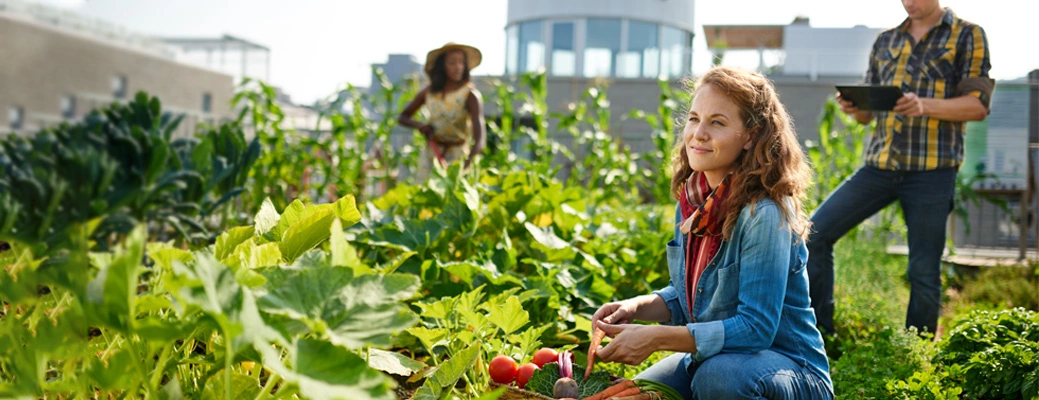How to Start an Urban Farm: A Step-by-Step 2025 Guide


What is urban farming? The answer is in the name: It’s all about growing food or raising (small) animals in urban areas, often using small or unconventional spaces to grow crops. Sure, urban farmers can’t raise acres of wheat or keep a herd of cattle on the roof, but that doesn’t mean you can’t join in and grow some of your own food. Enticed by the promise of fresh, healthy food at lower prices, as well as the enjoyment of seeing the literal fruits of your labor, urban farmers are redefining how and where we grow our food in cities across the country.
Like any new venture, knowing how to start an urban farm might feel daunting and difficult. You might have to forfeit your lawn (if you have one to begin with) or find land to farm in the city. Or you may need a setup that works in a small space not designed for farming. However, if you’re willing to get your own urban farm started, here are some steps to consider.
If you’re starting an urban farm, first develop a plan that lays out your vision and farming goals. A plan will help you think through what’s possible, what’s not and what you need in order to succeed. Creating an urban farm from the ground up requires an initial investment of time, resources and hard work. As you’re making your plan, ask yourself these questions:
Check the internet for local groups and community gardening organizations that might be able to provide support in your endeavor, or learn how to start a garden from scratch if you’re new to growing. And don’t discount the local library, either: Plenty of people have written books about urban farming that will help you spot challenges and opportunities that might come your way.
Maybe you want to convert your backyard into the perfect growing space. Or maybe you have little to no yard but dream of lush plants growing in your space. You can still bring your vision to life with the use of stackable containers or in under-utilized areas like rooftops or balconies.
If you have a yard but want to keep it intact, you still have options. Look for plots of land or vacant lots that are available for rent or sale in your city. If you plan to sell at a farmers’ market or produce local food for neighbors, zoning laws may also affect how and where you operate.
But before you get those seeds in the ground, look carefully at the place where you plan to grow. The site’s security, access to water, soil quality and, if it’s not on your own property, the distance you’ll have to travel to get there.
Secondly, check with your local government office about zoning laws, especially if you’re planning to use more than just a few pots with tomatoes on the porch. Some states prohibit using land within city limits for agricultural production. You’ll also want to check your state laws if you plan to have chickens, bees or goats on your urban farm, since special regulations may apply.
Before you get your hands too dirty, assess the soil where you’ll grow your farm. It’s important to find out if there’s too much clay, overly high acidity or a history of high amounts of chemicals used on the soil. If you find your soil isn’t prime for planting, consider building raised beds or finding a different location for your urban farm to reduce your carbon footprint.
Here’s the fun part: Deciding what you want to grow. You’ll need to take into account the length of the growing season, frost dates and the general climate in your area. Perhaps you want to grow vegetables, cultivate herbs or focus on flowers. Create a spreadsheet that details planting and transplanting dates for each crop, expected harvest dates and a plan for which crops will follow each planting. This will help keep your urban farming organized throughout growing season.
Take a tour of other community farms and gardens in your area and learn what’s been successful or not for them. This is the best way to learn — from those who’ve actually done it. Ask all of your questions! How many days are in the typical growing season? What’s the best way to utilize greenhouses? What should you plant and when?
If you’re looking to take your urban farm beyond personal use, you’ll want to explore niches in your local market so you can stand out from the crowd. Lean on your fellow urban farmers to get up and farm, whether you're supplying a farmers market, selling local food or serving your urban community.
Growing your own food can be exciting, but you want to make sure you and your property remain protected. Reach out to Farm Bureau for answers personalized to you, your region and your urban farm aspirations.